The Apple Watch Review
by Joshua Ho & Brandon Chester on July 20, 2015 8:00 AM EST- Posted in
- Wearables
- Apple
- Mobile
- Apple Watch
Design
With a new form factor comes the need to deeply analyze design, and in the case of a smartwatch it really becomes more important than ever before. Like clothing, watches are deeply personal in a way that smartphones weren’t. The most immediate aspect of the Apple Watch is the size. I’ve used the Moto 360 before, and while I didn’t think it was too big for me, people with smaller wrists can look rather ridiculous wearing the Moto 360 or many other smartwatches. Even in the 42mm variant, the Apple Watch is surprisingly small for a smartwatch. The 38mm variant is definitely sized for people with smaller wrists.
Outside of height and width, the thickness of the watch is definitely a bit more than what one might expect from a regular watch, but it isn’t really all that noticeable due to the rounded curves of the casing. When looking at the display, the display’s cover glass also blends seamlessly into the metal case of the watch, which really looks impressive indoors, although the illusion is somewhat lost in strong sunlight as it becomes obvious where the display ends and the bezel begins. This really helps with analog watchfaces, but in practice I found I was never really bothered by rectangular watch displays. If anything, I’ve found round watch display to lack information density; round watch displays just aren’t pragmatic for general purpose computing.
In order to really give a sense of what the watch looks and feels like when it’s on the wrist, I’m going to start by assuming that most people will wear this watch on their left hand. This places the side button and digital crown on the right. If you read nothing else in this entire article, you should know that the digital crown is probably the best solution I’ve seen to the smartwatch input problem yet. The digital crown manages to have just the right amount of friction to the knob so input feels deliberate without being difficult. The notches that surround the crown really help with gripping the crown and improve the precision of input with the digital crown. Both the digital crown and side button have a solid, clicky action, but it’s probably not a surprise at this point given that Apple seems to consistently nail down details like button feel on their iPads and iPhones.
On the left side of the watch, the only notable interruptions are the speaker and microphone holes. As far as I can tell there’s only a single microphone hole, but it seems that Apple has some form of noise cancellation as background noise is generally well-muffled.
The top and bottom of the watch are just the attachment points for the bands of the watch, but from a design perspective this is probably one of the most crucial. The interchangeable bands work incredibly well because of just how easy it is to attach and detach bands. Attaching a band is as simple as matching with the slot and sliding it in, although it is possible to get it wrong by putting a band in upside-down. The fit and finish of both the Milanese loop and sport band that I received were both essentially perfect here, and the Milanese loop band has a glossy finish on the side that helps the band to blend in with the casing of the watch.
The bands themselves are probably the most important aspect of the Apple Watch's design. While Apple definitely hopes that users will be purchasing bands in addition to the one that comes with their watch, it's a safe bet that most users will be using the fluoroelastomer bands that ship with the Apple Watch Sport and the entry level Apple Watch and Apple Watch Edition models. Because the fluoroelastomer band ships with the Sport version of the watch and has to fit every wrist size the fluoroelastomer band actually is more like one and a half bands. Included in the package is the section of the strap with the metal pin, and two pieces of different lengths with holes in them. The longer one is meant for users with larger wrists, and the smaller one for users with smaller wrists.
As for the band itself, the feel of it can be difficult to describe. When they were first revealed, my initial thought was that they would have a somewhat firm and rubbery feel. It turns out that the bands are very flexible, and also very soft. The best description I could give is that it feels similar to the soft touch back of the black Nexus 5 and Nexus 9, but much smoother and very resistant to smudges. Water also tends to roll right off of it which makes it very well suited to fitness activities. Since it's not infinitely adjustable there's always a small mismatch between the size of the band and the size of your wrist, but there's not much that can be done to solve that with a pin and tuck design.
In the case of the Milanese loop, the infinitely adjustable design has basically solved the teething issues I have with wearing most watches. The band manages to deal with the issues I’ve always had with wristbands that always seemed to be either too tight or too loose. The fabric-like pattern of the metal links also helps to distribute pressure while allowing for ventilation, so I don’t feel the need to constantly take off the watch due to trapped sweat or some similar issue. It’s also easy to clean the metal bands if they get dirty, although I suspect the leather bands will be rather difficult to deal with in this regard. There is some potential to pinch hairs, but in my experience this is pretty unlikely and I can count on one hand the number of times I’ve noticed this problem in the past few months. As a result, this is probably the only watch I’ve ever worn that is consistently comfortable regardless of weather conditions. Independent of how good the wearable is from a digital logic/software standpoint, I’ve noticed that these aspects of the design are far, far more crucial than anyone seems to notice. In the case of Apple Watch, the bands are pretty much as good as it gets.
Moving past the bands, the back of the watch is somewhat unremarkable. There’s a rounded crystal that houses the heart rate LEDs and sensors, and serves as an attachment point for the MagSafe wireless charger. In practice, the only notable issue here is that the crystal seems to act as a pressure point when wearing the Watch, but it’s likely that this is done to ensure proper contact for the heart rate monitor.
Overall, Apple has pretty much nailed the design of the watch. The controls are well-executed and placed in a pragmatic position, in a way that I haven’t really seen anyone else achieve yet. The only real objection I have to the design is that the stainless steel casing seems to be a magnet for small scratches. They’re tough to see in most conditions, but with strong lighting it becomes pretty obvious that it’s pretty easy to scratch the watch casing. I suspect the only solution here is to regularly buff out scratches from the casing like most any stainless steel watch. As for the Apple Watch Sport, the 7000 series aluminum seems to hold up to daily use without any sign of scratches or chips on the casing of the watch. At 25g and 30g for the 38mm and 42mm respectively it's also lighter than the 40g and 50g masses of the stainless steel models. Since the Sport edition uses Ion-X glass like the iPhone 6 instead of the Sapphire crystal of the normal Apple Watch and Apple Watch Edition, the display cover glass is much more susceptible to scratching. While I haven't encountered any scratches at this point, the sapphire glass editions will undoubtedly better stand the test of time.




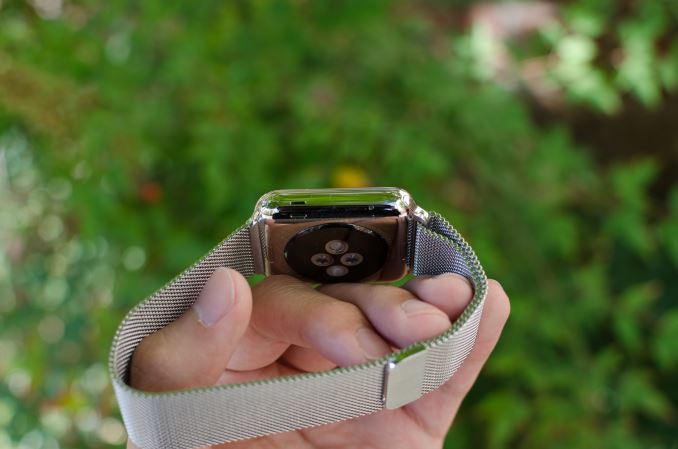
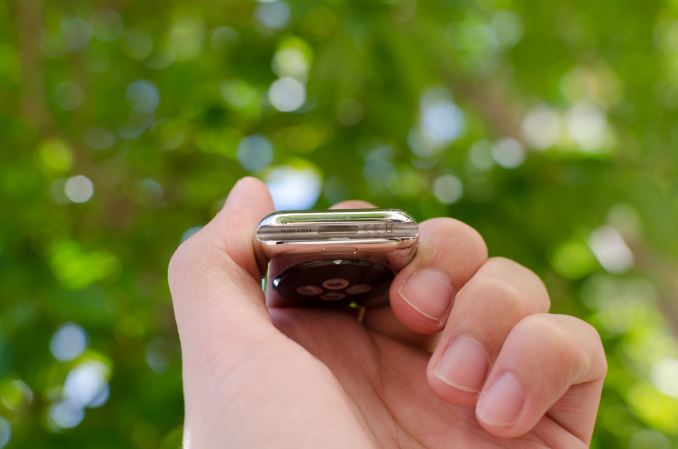
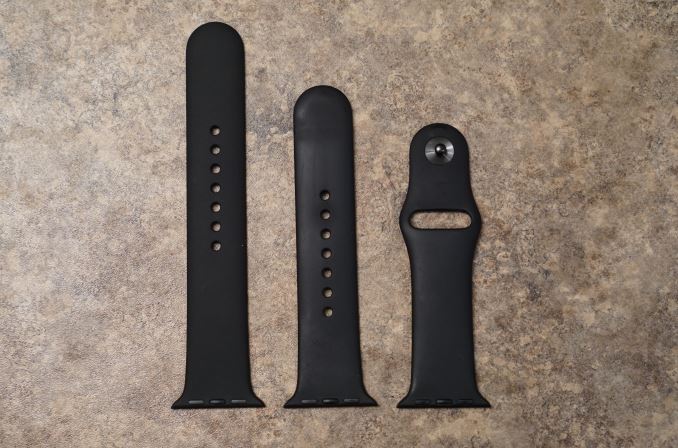
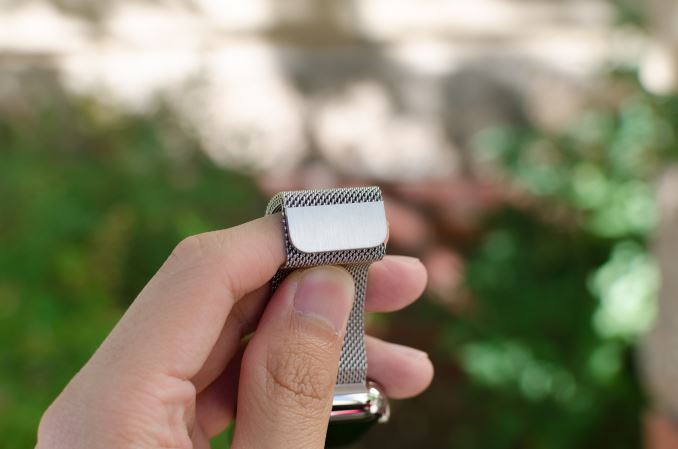
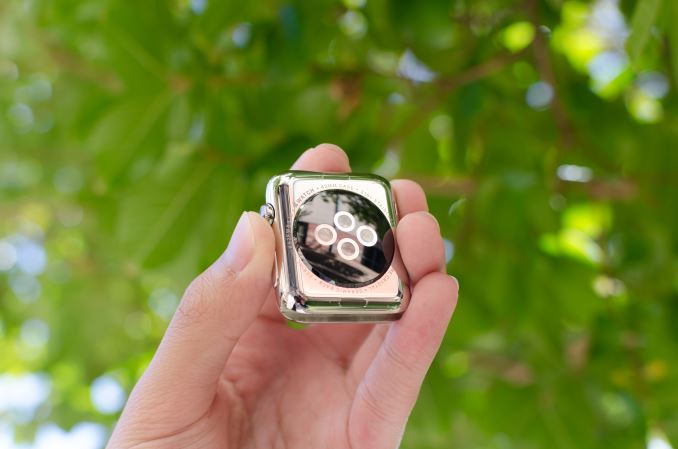








270 Comments
View All Comments
relentlessfocus - Monday, July 20, 2015 - link
I bought my AppleWatch out of curiosity though I was dubious about functionality, unenthusiastic about the physical design and unsure if I'd find it comfortable to wear as I hadn't worn a watch in decades and since getting a smartphone I saw no particular need to wear a device for telling time. I bought a space grey sport and bought a green plastic band.Almost immediately I liked wearing the watch as a fashion item. YMMV but once I was wearing it I liked how it looked. As I work out a lot on a rowing machine I hoped the heart rate monitor could replace my Polar HRM. To an extent it has. When comparing the read outs from both in a steady state situation my readings are within 1-2 bpm. The watch does take 15 seconds or so to get a reading while the Polar Band seems instantaneous. The band of the AppleWatch has to be worn tighter than normal to get a good reading. Occasionally the AppleWatch gives a totally false reading for awhile then jumps back to accurate readings. Calorie burn comes out almost identical to Concept2 readings plugged into their calorie counter.
ApplePay has just come to the UK and I'm eager to try that out when my bank joins at the end of the month. Some of the inbuilt functionality does minimise friction of my use of my iPhone reducing the number of times I have to pull my phone out of my pocket. Agree that's a first world problem but I do live a first world hectic lifestyle.
Despite the rant of JJJ below I like my watch and I'm happy I bought it. I don't think it's a must buy for most people, it's a convenience at the moment not a necessity. I do think that wearables have a strong future. Biometric sensors are bound to become more sophisticated, GPS receivers smaller, and a range of use cases unimagined today likely to arise.
mrdude - Monday, July 20, 2015 - link
"Although we don't have an objective battery life test, the Apple Watch never failed to last a full day, and charge time is acceptable although nowhere as fast as something with wired fast charging. This sounds like a relatively short comment, and it's because I sincerely never worried about battery life. Range anxiety just isn't a problem like it is on smartphones."That's precisely why this is a very poor watch -- and even smart watch, for that matter. Battery life should be roughly a week and not a single day.
Up until a year ago, I never wore a watch. Now I can't go without it. I left the house without it on once and felt like I wasn't wearing any underpants. The only reason I began wearing one was due to work, and more succinctly because I couldn't pull out my cell phone whenever I felt like (hospital setting). A smart watch would be perfect for me, as I could potentially use it as a regular watch, and also access/read messages beaming from my phone... except 'dat battery. The apple watch turns off the display *way* too quickly and still suffers from very poor battery life. Further, as an independent device it's practically useless.
I really dislike this review. It's not so much that the technical aspects aren't discussed, and done so well, it's just that the practicality is practically ignored. And that ultimately is why this is a pointless device. My use case isn't a corner case either but rather the epitome of a perfect scenario for this device: a phone-away-from-phone that could offer a "smart" device while still maintaining the practicality of a watch. This isn't it. It does neither. And for other use cases, one can make the argument of why not just use your phone in the first place?
Kjella - Monday, July 20, 2015 - link
With no offense, I find your expectations unrealistic. If you want a smartphone strapped to your wrist - particularly one lasting a week as few phones do - it's going to have the weight and volume too. I actually expected it to be more like a smartphone wrist accessory like a bluetooth headset, not less. If they want this to work better, they should do more to make the smartphone the "cell tower" and the watch the "cell phone" part of the relationship as another 50g in my pocket would be fine if I need to drag it out less. Maybe have less ambition about performance and concentrate on simple 2D graphics for notifications at a lower cost. But in the end, their primary customers are those who are saying "Watch? WTF do I need a watch for, that's so 20th century." Because it's going to be a sucky "normal" watch even if they do all that and more.mrdude - Monday, July 20, 2015 - link
I don't want a smartphone strapped to my wrist. It's a watch first, and should therefore handle being a watch first and foremost with no troubles. The additional functionality should come without compromising the fact that this is a watch. The Apple Watch doesn't do that, and I fear it's going to be more than a single generation to get there.Kjella, this is a separate device from your phone. It should add functionality while still being a watch. This doesn't do 'watch' well at all. In fact, it's a horrendous watch. It's stylish, and it can fetch messages from your phone, sure. But it lacks the ease of use and the battery life is horrendous. It doesn't need to last a month, but roughly a week and shouldn't require a dumb hand motion or click of a button to do its main job. Remember: it's a watch.
PeteoBos - Monday, July 20, 2015 - link
Rember is a SMART watch. If I wanted just a watch i could buy a $2 watch. I get filtered notifications on my wrist. I want to seen when the next bus is coming before heading to the bus stop. I want to see where I am on a topo map while kayaking or hiking with my phone in a safe place. I want track my workouts, my heart rate, how many calories i'm burning. I want to be able to quickly reply to a Txt I actually see on my watch and not miss it because i never feel my phone vibrate in my pocket. I want to be-able to pick up a phone call from my wife when I am in my house and do not have the phone next to be because I'm paying attention to my daughter instead of staring at a Dam phone screen all day.mrdude - Monday, July 20, 2015 - link
Just don't expect to do that throughout the day and then also tell the time on the way home, because it'll be dead. And during your daily routine, the "watch" will tell you the time provided you only need to look at it for a fraction of a second.See the problem? Watch first, then the rest. Instead, Apple did a smartphone accessory under the guise of being a watch.
ingwe - Monday, July 20, 2015 - link
Kind of agree. The thing is that there are a lot of tradeoffs to make when designing something this small. The less "smart" it is, the less you can charge for it. The more "smart" it is, the harder it is to achieve any kind of reasonable battery life. I think they picked a point on the smart vs battery life curve that I am not interested in, but I that doesn't mean it is a wrong choice. It just isn't what I want. Especially not at that price tag, but that is kind of a separate issue to me.I should probably note that I am including screen capabilities in my definition of smart.
liuping - Monday, July 20, 2015 - link
A Fraction of the second? have you actually used the watch?When looking you tilt the watch to check the time, the screen stays on for 7 seconds before the screen turns off. 7 seconds is long enough for me to read the time, check my next appointment and see if any notifications have arrived. If I need more time I can touch the screen.
Also, I use my Apple watch all day and have not had any issue with the battery. It's has always over 40% at the end of the day when I place it in the charger.
PeteoBos - Monday, July 20, 2015 - link
do you own one? I think not. I do those all the time and it easily lasts a day. An ifs a GREAT Watch. its fine if you dont "like" it or think its practical, but i get allot of real world use out of it and love it. just like the anand reviewer.Daniel Egger - Monday, July 20, 2015 - link
Sounds like you should get a Pebble Steel.